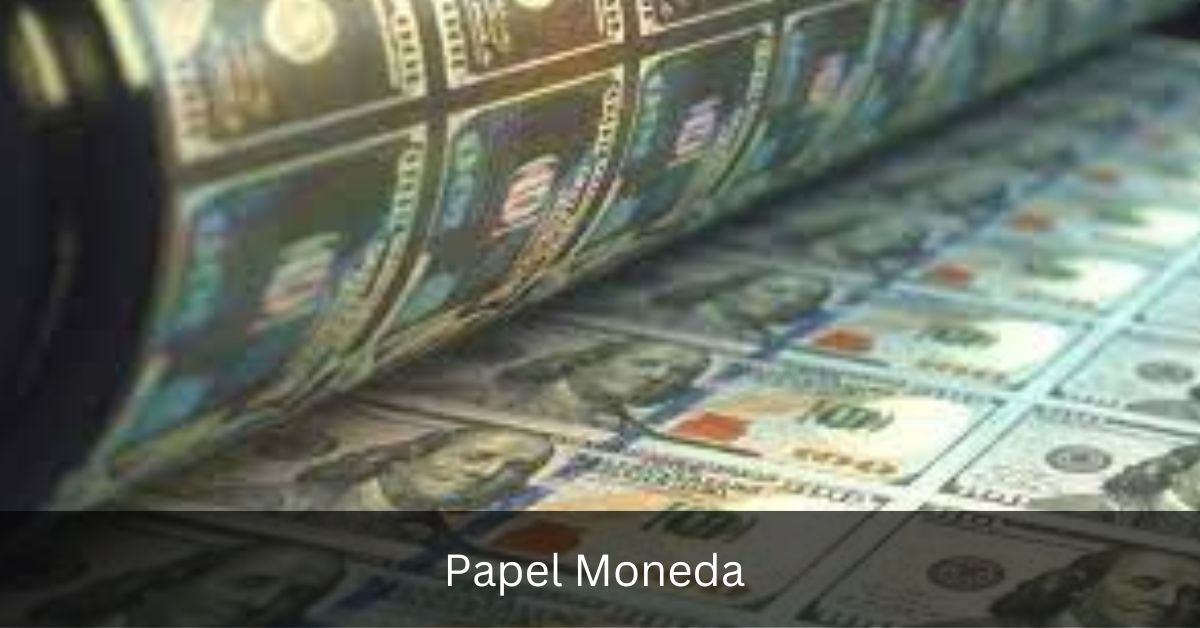Papel moneda, or paper currency, holds a pivotal role in the global economy. From its humble origins to its current ubiquitous presence, papel moneda has undergone a remarkable journey, shaping economies and facilitating transactions worldwide. This article delves deep into the intricacies of papel moneda, exploring its historical significance, modern relevance, and future prospects.
Table of Contents
Origins of Papel Moneda:
Papel moneda traces its roots back to ancient civilizations where bartering was the primary means of trade. However, as societies evolved, the need for a more convenient and standardized medium of exchange became evident.
Early Forms of Currency: Early forms of currency included commodities such as shells, beads, and livestock. These were gradually replaced by metallic coins, which offered greater durability and portability.
Transition to Paper Currency: The concept of paper currency emerged during the Tang Dynasty in China, where merchants used promissory notes as a form of payment. This innovative approach laid the foundation for the widespread adoption of papel moneda in later centuries.
Evolution of Papel Moneda:
Over the centuries, papel moneda has evolved significantly, incorporating technological advancements and sophisticated security features.
Technological Advancements: From simple promissory notes to intricate banknotes embedded with advanced security features, the evolution of papel moneda reflects advancements in printing technology and counterfeit prevention measures.
Security Features: Modern papel moneda features a myriad of security features, including holographic strips, microprinting, and watermarks, ensuring its integrity and authenticity.
Modern Applications:
In today’s digital age, papel moneda continues to adapt to changing technologies and market demands.
Digitalization of Currency: The rise of digital currencies poses both challenges and opportunities for papel moneda, prompting central banks to explore innovative solutions such as central bank digital currencies (CBDCs).
Impact of Cryptocurrency: The emergence of cryptocurrencies has sparked debates about the future of papel moneda, with proponents highlighting its potential to revolutionize financial systems and detractors raising concerns about regulatory oversight and stability.
Role in Banking:
Central banks play a crucial role in issuing and regulating papel moneda, influencing monetary policies and economic dynamics.
Central Bank Policies: Central banks carefully manage the supply of papel moneda to control inflation rates and maintain macroeconomic stability.
Monetary Policy Implementation: Through tools such as interest rate adjustments and open market operations, central banks utilize papel moneda as a lever to achieve policy objectives.
Cultural Significance:
Beyond its economic utility, papel moneda holds cultural significance, often featuring artistic designs and symbolic imagery.
Artistic Depictions: Banknotes frequently showcase iconic landmarks, historical figures, and cultural symbols, reflecting the unique heritage and identity of each nation.
Symbolism: The design elements of papel moneda often carry symbolic meanings, representing national pride, unity, and aspirations for the future.
Challenges and Innovations:
Despite its advancements, papel moneda faces challenges such as counterfeiting threats and regulatory complexities.
Counterfeiting Threats: The proliferation of sophisticated counterfeit operations poses a significant challenge to the integrity of papel moneda, prompting continuous innovation in security measures.
Innovation in Anti-counterfeiting Measures: To combat counterfeiting, central banks and printing authorities invest in research and development to enhance the security features of papel moneda, leveraging cutting-edge technologies such as micro-optics and color-shifting inks.
Global Perspectives:
Papel moneda plays a crucial role in shaping global financial systems and influencing monetary policies.
Cross-border Transactions: In an interconnected world, papel moneda facilitates cross-border transactions, supporting international trade and investment flows.
International Monetary Policies: Global economic developments and geopolitical factors influence the value and stability of papel moneda, necessitating coordination among central banks and regulatory bodies.
Future Trends:
As the financial landscape evolves, papel moneda is poised to undergo further transformations, driven by technological innovation and shifting consumer preferences.
Shift Towards Cashless Economies: The rise of digital payments and mobile banking heralds a gradual transition towards cashless economies, challenging the traditional role of papel moneda.
Sustainability Efforts: Central banks and financial institutions are increasingly focused on sustainability initiatives, exploring eco-friendly materials and production processes for papel moneda to reduce environmental impact.
Papel Moneda in Developing Economies:
In developing economies, papel moneda plays a vital role in promoting financial inclusion and economic empowerment.
Financial Inclusion: Papel moneda provides access to formal financial services for underserved populations, fostering economic inclusion and poverty alleviation.
Economic Empowerment: By enabling savings, investments, and access to credit, papel moneda empowers individuals and communities to participate in economic activities and improve their livelihoods.
Environmental Impact:
The production and disposal of papel moneda have environmental consequences, prompting efforts to adopt sustainable practices.
Sustainable Practices: Central banks are exploring sustainable alternatives for papel moneda production, such as using recycled materials and implementing energy-efficient manufacturing processes.
Paper Currency Recycling: Recycling initiatives aim to reduce the environmental footprint of papel moneda by repurposing old banknotes into new ones, minimizing waste and conserving resources.
Public Perception:
Trust and confidence are essential pillars of papel moneda, influencing its acceptance and circulation within society.
Trust and Confidence: Maintaining public trust in papel moneda requires transparent governance, effective regulation, and robust security measures to safeguard its integrity and value.
Public Education Initiatives: Educational campaigns raise awareness about the importance of papel moneda security features and counterfeit detection methods, empowering individuals to identify genuine banknotes and protect themselves from fraud.
Regulation and Compliance:
Effective regulation and compliance frameworks are essential to ensure the integrity and stability of papel moneda.
Legal Frameworks: Regulatory authorities establish legal frameworks to govern the issuance, circulation, and redemption of papel moneda, ensuring adherence to standards of transparency and accountability.
Compliance Measures: Financial institutions and currency issuers implement stringent compliance measures to prevent money laundering, terrorism financing, and other illicit activities involving papel moneda.
Educational Initiatives:
Promoting financial literacy and historical education is crucial for fostering a deeper understanding of papel moneda’s role in society.
Financial Literacy Programs: Educational initiatives aim to equip individuals with the knowledge and skills to make informed financial decisions, including understanding the functions of papel moneda and managing personal finances effectively.
Historical Education Campaigns: Preserving the historical legacy of papel moneda through educational campaigns and museum exhibits helps to celebrate its cultural heritage and significance in shaping economies and societies.
Conclusion:
In conclusion, papel moneda occupies a central position in the global economy, serving as a symbol of economic prosperity, cultural identity, and technological innovation.
As we navigate an increasingly digital and interconnected world, papel moneda continues to adapt and evolve, reflecting the dynamic nature of modern finance. By embracing sustainability, innovation, and inclusivity, papel moneda will remain a cornerstone of economic growth and prosperity for generations to come.
FAQs:
1. How has papel moneda evolved over time?
Papel moneda has evolved from simple promissory notes to sophisticated banknotes embedded with advanced security features, reflecting advancements in printing technology and counterfeit prevention measures.
2. What are the challenges facing papel moneda?
Papel moneda faces challenges such as counterfeiting threats, regulatory complexities, and the rise of digital currencies, prompting continuous innovation and adaptation in the financial sector.
3. How does papel moneda contribute to economic stability?
Papel moneda provides a stable medium of exchange, facilitating transactions, promoting investment, and supporting economic growth by fostering confidence and certainty in financial transactions.
4. What are some future trends in papel moneda?
Future trends in papel moneda include the shift towards cashless economies, sustainability efforts, and the adoption of innovative technologies to enhance security and efficiency in financial transactions.
5. Why is public trust important for papel moneda?
Public trust is essential for the acceptance and circulation of papel moneda, as it ensures confidence in its value, integrity, and reliability as a medium of exchange in daily transactions.
6. How do educational initiatives promote awareness about papel moneda?
Educational initiatives raise awareness about papel moneda’s history, significance, and security features, empowering individuals to identify genuine banknotes and protect themselves from fraud.
Read:
- What is American Technology Consulting (ATC)? Shaping the Future of Technology
- What is wfo.sykes/wfo? Unveiling Workforce Optimization with WFO Sykes
- Nostalgia for Affordable GPUs: Exploring the Nvidia GeForce GTX 590
- SnapTik: Your TikTok Video Downloader 2024
- Honeywell thermostat reset: A Guide to Resetting and Resolving Temperature Issues



